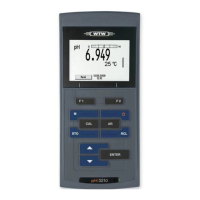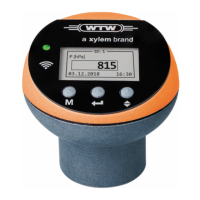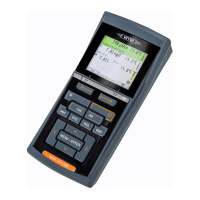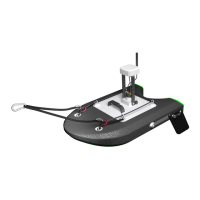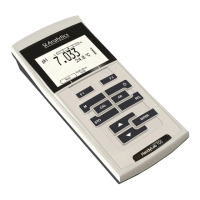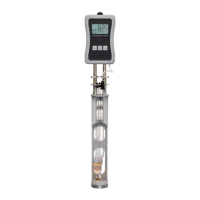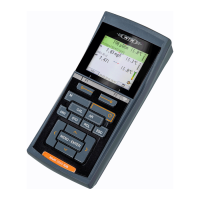pg | 14
thermistor’s resistance changes with temperature. e measured resistance is then converted to temperature
using an algorithm. e temperature sensor receives a multi-point NIST traceable wet calibration and the
accuracy specication of 0.01˚C is valid for expected life of the probe. No calibration or maintenance of the
temperature sensor is required, but accuracy checks can be conducted and logged through the KOR interface
soware.
Conductivity Electrodes
e conductivity sensor uses four internal, pure-nickel electrodes to measure solution conductance. Two of
the electrodes are current driven, and two are used to measure the voltage drop. e measured voltage drop is
then converted into a conductance value in milliSiemens (millimhos). To convert this value to a conductivity
value in milliSiemens per cm (mS/cm), the conductance is multiplied by the cell constant that has units of
reciprocal cm (cm-1). e cell constant for the conductivity cell is approximately 5.5/cm ±10%. For most
applications, the cell constant is automatically determined (or conrmed) with each deployment of the system
when the calibration procedure is followed.
Temperature Compensation
EXO sensors have internal thermistors for quality assurance purposes. However, this internal temperature
is not logged or displayed. Turbidity uses the internal thermistor for temperature compensation, while all
other EXO sensors reference the C/T probe for temperature compensation. To display and log temperature,
a C/T probe must be installed in an EXO sonde.
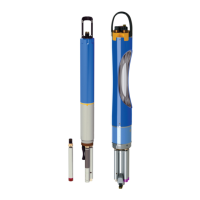
